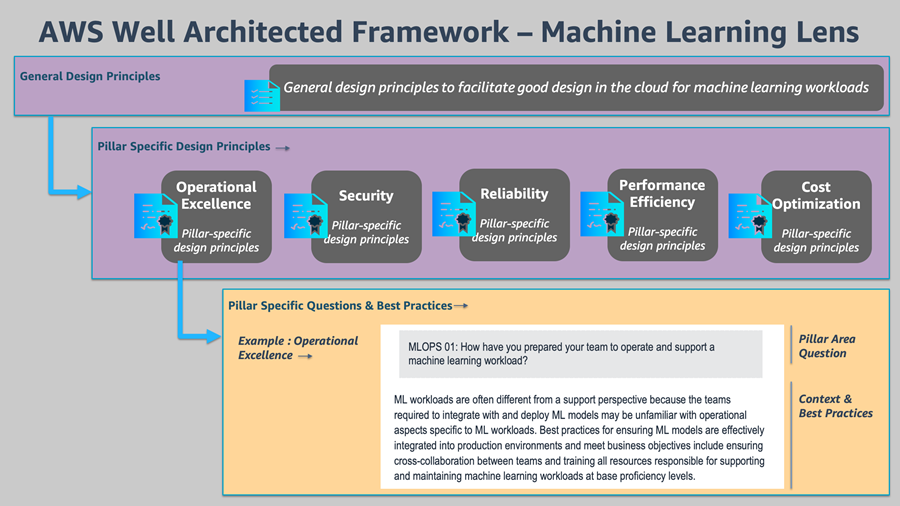Machine learning know-how
from AWS in the spirit of
Well-Architected
Machine learning is based on the memory and duplication of certain patterns and behaviours by machines that support the processing and analysis of large amounts of data, which are associated with workloads. To better control them, it is worth following the guidelines contained in Machine Learning Lens from AWS.

However, at the very beginning, it is worth recalling the Well-Architected Framework from AWS, which is a collection of best practices and principles related to designing infrastructure in the cloud. How it supports good design has been described in one of our blog posts. In addition to the general set of rules, which is the framework itself, AWS also published the so-called Lenses, the whitepapers (documents) related to specific areas among others are Serverless, IoT, high performance and machine learning issues. They complement the main framework and, as the name suggests, focus on solutions devoted to a specific field.
Machine Learning Lens focuses on the issues of how to design, build and implement resources connected with the machine learning area in the AWS cloud. Like the Well-Architected Framework, it is based on five pillars: operational, security, reliability, operational efficiency and cost optimization. Although ML Lens has been prepared to support the Well-Architected Framework, it can also be used alone. The scheme below shows the principles of the Framework and examples of verification questions used during the audit of workloads using Machine Learning Lens.

Source: Amazon Web Services
How to use Machine Learning Lens?
The main components of the document are:
- pillars,
- workloads design rules,
- questions regarding the assessment of existing or planned workloads,
- best practices.
The principle of Well-Architected Framework and Machine Learning Lens is simple. Each of the described pillars has a set of questions, mapped in the design principles and as a result containing a set of best practices for workloads in machine learning. To start implementation measures, you must start by answering the questions contained in the document. It is important to identify areas where improvements need to be made. It is also important to consider any remedial elements to be implemented. Thanks to this, you can create an action plan with priorities. AWS recommends using the “lens” during the entire life cycle of machine learning workloads, especially at the design and implementation stages, in order to be able to early identify potential problems and provide the time necessary for their analysis and solution preparation. Safety is also an important aspect of the designing process according to the ML framework. Workloads of machine learning in AWS should be secured using authentication and authorization controls that supervise who and what can access various machine learning artifacts.
Benefits of using Machine Learning Lens
By designing in accordance with the Well-Architected Framework, machine learning workloads can be built and implemented faster. Another plus is the reduction of technological risk (e.g. by automating deployment and the possibility of its evaluation during the design process). The use of best practices allows you to make more informed business decisions. Using “whitepapers” prepared by AWS allows you to realize how to meet even the most restrictive design or legal conditions, especially taking into account the issues of ongoing compliance with the security requirements of tools and services provided by AWS. An additional plus is a possibility of performing a free assessment of existing loads and preparing an optimized solution, based on free vouchers for AWS services, which can be earned with the participation of an authorized AWS Partner.

